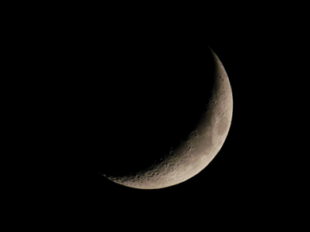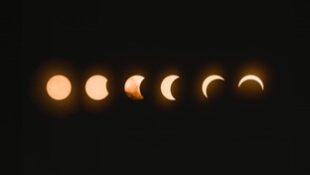
As the holy month of Ramadan draws to a close, Muslims around the world anticipate the sighting of the new crescent Moon. This celestial event marks the end of fasting and the beginning of Eid al-Fitr, a festival that celebrates faith, community, and gratitude.
The Moon is significant because the Islamic calendar follows a lunar visibility system; each month begins with the sighting of the crescent Moon in the sky.
The Moon’s phases
Royal Observatory Greenwich describe the eight phases of the Moon, starting with the ‘new Moon’.

- New Moon: The Moon’s near side remains unlit by the Sun, making it invisible from Earth.
- Waxing Crescent: A small portion of the Moon becomes visible—a phase marking the new Islamic month.
- First Quarter, Waxing Gibbous, and Full Moon: This phase is the gradual illumination of the entire Moon’s face by the Sun, meaning the Moon can now be seen from the Earth.
- Waning Gibbous and Last Quarter: The Moon appears smaller.
- Waning Crescent: The cycle begins again.
Astronomy and the Islamic calendar are intrinsically linked, and this is why sighting the Moon signals the start of Eid Al-Fitr.
Why the new crescent Moon matters
- The 29th Day Ritual: On the 29th day of each Islamic month, Muslim's venture out after sunset, seeking the crescent moon. If they spot it, the month has 29 days; if not, it extends to 30 days. This practice ensures that the Islamic year aligns with the lunar cycle.
- Eid Al-Fitr: The festival of breaking the fast depends on this lunar sighting. When the new crescent moon appears Ramadan concludes, and Eid festivities commence.
- Global variations: The Moon’s visibility varies across the globe, consequently, different countries may observe Eid on different days. In the UK, diverse Muslim communities follow calendars from various countries, leading to variations in celebration dates.
🌙 Eid Moonsighting LIVE
On Tuesday 9 April 2024, the Royal Observatory Greenwich held a live broadcast for the Eid Moonsighting. You can watch this event on Youtube where astronomers and people from across the UK scanned the evening skies for the appearance of the new crescent moon.
For insights into the links between astronomy and the Islamic calendar, please visit this Royal Observatory Greenwich page.
We wish those who are celebrating, a very happy Eid Mubarak.







